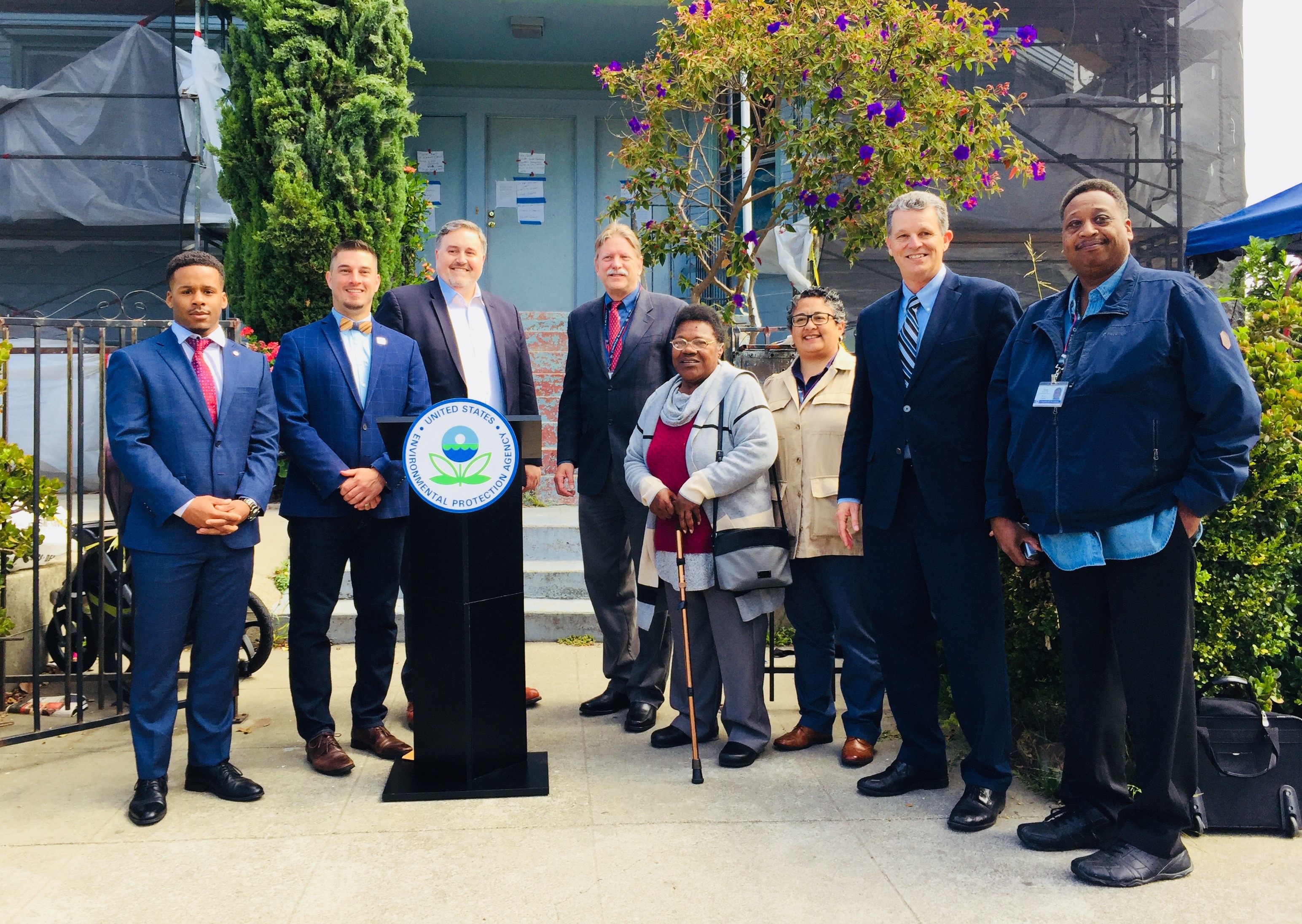U.S. EPA Takes Important Step to Further Protect Children from Exposure to Lead-Contaminated Dust
SAN FRANCISCO – Today, U.S. Environmental Protection Agency (EPA) Administrator Andrew Wheeler, along with Housing and Urban Development Secretary (HUD) Ben Carson, announced new, tighter standards for lead in dust on floors and window sills to protect children from the harmful effects of lead exposure.
In the Bay Area, EPA’s director of the Land, Chemicals and Redevelopment Division for the Pacific Southwest, Jeff Scott, joined with HUD Pacific Region Senior Advisor Jimmy Stracner, Alameda County Healthy Homes Department (ACHHD) Housing Programs Manager Dale Hagen and other local officials at a HUD-funded remediation project in Oakland to highlight efforts to reduce exposure to lead in homes.
“EPA is delivering on our commitment in the Trump Administration’s Federal Lead Action Plan to take important steps to reduce childhood lead exposure,” said EPA Administrator Andrew Wheeler. “Today’s final rule is the first time in nearly two decades EPA is issuing a stronger, more protective standard for lead dust in homes and child care facilities across the country.”
“Lead-contaminated dust is one of the most common causes of elevated blood lead levels in children,” said EPA Pacific Southwest Regional Administrator Mike Stoker. “This new standard will help ensure that all children – regardless of where they live – can live, learn, and thrive in safe and healthy environments.”
“EPA’s updating its standards for lead dust on floors and windowsills in pre-1978 homes and child-occupied facilities is an important advance,” said HUD Secretary Carson. “We will use this new rule in updating the lead safety requirements for the pre-1978 housing we assist.”
“As no safe blood lead level in children has been identified, we are pleased to see EPA enact this more protective standard,” said Healthy Homes Department Manager Dale Hagen of the Alameda County Community Development Agency. “Protecting the children in our community from exposure to lead is important for their lifelong good health, and accurately identifying problem areas so they can be addressed is an important part of our work.”
Since the 1970s, the United States has made tremendous progress in lowering children’s blood lead levels. In 2001, EPA set standards for lead in dust for floors and window sills in housing, however since that time, the best available science has evolved to indicate human health effects at lower blood lead levels than previously analyzed.
To protect children’s health and to continue making progress on this important issue, EPA is lowering the dust-lead hazard standards from 40 micrograms of lead per square foot (µg/ft2) to 10 µg/ft2 on floors and from 250 µg/ft2 to 100 µg/ft2 on window sills. The more protective dust-lead hazard standards will apply to inspections, risk assessments, and abatement activities in pre-1978 housing and certain schools, child care facilities and hospitals across the country.
The Oakland site visited by federal and local officials is currently being remediated under Alameda County’s Partnerships for Affordable Lead-Safe Housing program. Built in 1919, the property has extensive lead-based paint on the exterior and some interior surfaces. Funded by HUD’s Office of Lead Hazard Control and Healthy Homes, the program provides lead testing, assists the owner in selecting a qualified lead-certified contractor, and provides a grant of up to $10,000 per housing unit to correct lead hazards. The program is available for pre-1978 properties with low-income households where owner-occupants have children under six or a pregnant occupant, and for rental units with low-income households where owners make a three-year commitment to remain in the program.
Lead-contaminated dust from chipped or peeling lead-based paint is one of the most common causes of elevated blood lead levels in children. Infants and children are especially vulnerable to lead paint exposure because they their growing bodies absorb more lead than adults do, and their brains and nervous systems are more sensitive to the damaging effects of lead. They can be exposed from multiple sources and may experience irreversible and life-long health effects. Lead dust can be generated when lead-based paint deteriorates or is disturbed.
The rule will become effective 180 days after publication in the Federal Register.
A link to this final rule and to learn more: https://www.epa.gov/lead/hazard-standards-lead-paint-dust-and-soil-tsca-section-403
Learn more about the lead-based paint program: https://www.epa.gov/lead
Background
Reducing childhood lead exposure and addressing associated health impacts is a top priority for EPA. In December 2018 EPA Administrator Wheeler and other Federal Officials produced the Lead Action Plan, a blueprint for reducing lead exposure and associated harms by working with a range of stakeholders, including states, tribes and local communities, along with businesses, property owners and parents.
EPA continues to work with its federal partners to improve coordinated activities and implement objectives of the Lead Action Plan.
Learn more about EPA’s Pacific Southwest Region. Connect with us on Facebook and on Twitter.

